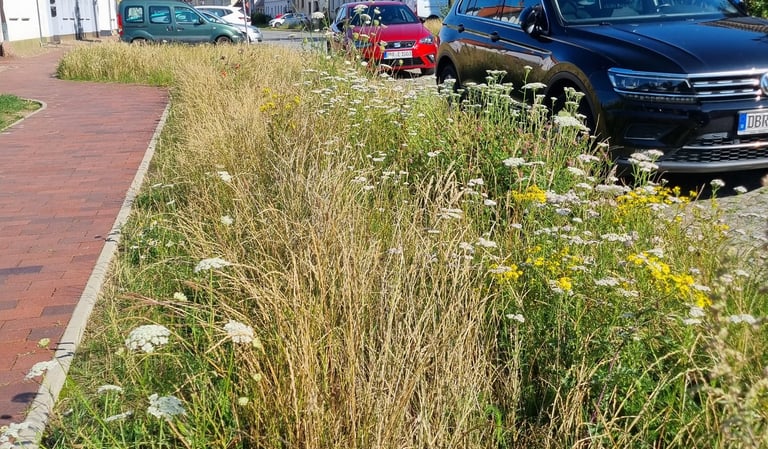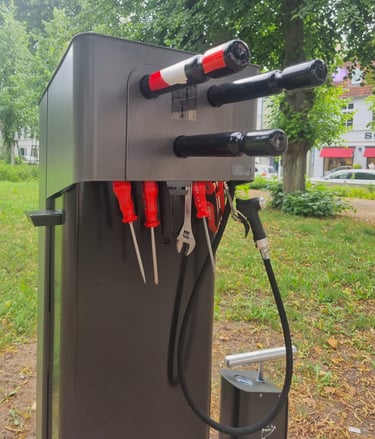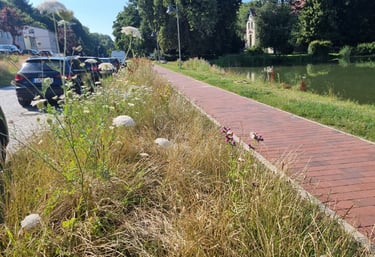When Regeneration Reaches Your Hometown
A visit back to my small northern German hometown revealed emerging signs of change, from wildflower meadows to a public bike-repair station, showing how even the smallest places are beginning to embrace regeneration.
Marie Urfels
8/11/20252 min read


This summer, I visited my hometown in northern Germany, where I was born and raised. With only 13,000 residents, it is a quiet place, and I was pleasantly surprised by the changes I observed since my last visit just a few months ago.
Small, local acts of regeneration had started to appear. Urban lawns that had been bare grass for as long as I can remember - at least the past 25 years - were now blossoming into vibrant patches of diverse wildflowers.
In the central park, a public bike-repair toolbox had been installed, offering tools and a pump for tourists and locals alike to fix a bike or even small appliances.
I was, honestly, a little shocked to see these shifts happen in such a short time. These small actions might seem modest, but they speak volumes about how even the smallest places are beginning to embrace regeneration. They are tangible signs that the global calls for regenerative practices, the push to localize the Sustainable Development Goals, and the work being done across international, national, regional, and local levels are taking root.
Regenerative practices focus on restoring and renewing natural and social systems, going beyond sustainability to actively improve the health of our environments and communities. In urban and rural settings alike, this means fostering biodiversity, promoting local resilience, and creating spaces that encourage community interaction and wellbeing.
While my small hometown is just one example, it reflects two important trends. Firstly, it shows how important small towns are in spearheading regenerative transformations. We often only talk about large or medium-sized cities, but small towns also play a crucial role. In Germany, for example, one third of the population lives in small towns, making them a key player in tackling global and local challenges.
Second, we see a growing global movement. Cities and towns worldwide are experimenting with ways to reconnect people and nature, combat climate change, and rebuild social bonds through simple but effective actions.
Our urban challenges today remain complex. But witnessing these changes in my own small hometown was deeply hopeful and refreshing.
These might be small steps, but they are steps of hope. They are proof that even at the smallest scale, change is happening. And from these seeds, greater transformations can grow.



